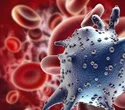Novel Techniques Improve Pharmaceutical Stability Testing
Such testing is essential to ensure that the drug product maintains the desired efficacy and purity after transportation and storage. Various constituents of the pharmaceutical product, including the active pharmaceutical ingredient (API), have the potential to undergo physical changes as the result of impact, vibration, abrasion, fluctuations temperature and humidity, microbiological changes or degradation reactions. Such changes may in turn reduce its potency, or lead to the formation of toxic degradation products.
Rigorous testing is conducted to provide confidence that pharmaceutical products maintain post-production quality levels until the time they reach consumers. The results of stability testing are used to provide an indication on the product label of the time up to which it is guaranteed that the medicine will be safe and effective.
Such testing is now governed by strict regulations, and stability testing data are required for a new drug or formulation to receive regulatory approval. All ingredients and products of enforced degradations must be separated and individually characterised using validated methodologies.
Stability testing is thus a complex process as the effects of a variety of factors that may influence stability must be assessed. In addition, drug entities are becoming more and more complex, posing more challenges to achieving reliable separation and identification of all constituents. This has driven the demand for increasingly sensitive and cost-effective analytical methodologies.
Stability-Indicating Test Development
A stability-indicating test must be specifically tailored for each drug product so that the content of active ingredients and degradation products can be accurately measured. Since there is no single assay or parameter that can characterize complex pharmaceutical products, the manufacturer is required to propose a stability-indicating methodology and demonstrate that it is adequate to detect changes in the identity, purity and potency of their product.
At Pittcon 2019, Kim HuynhBa of Pharmalytik will be discussing the importance of accuracy and precision in stress testing methodologies and the key aspects to consider in the development and validation of stability-indicating methods in her presentation entitled “Key Factors to Develop Stability-Indicating Methods for Pharmaceutical Products”.
A time-consuming systematic method development process must be followed on discovering a novel drug candidate to identify an appropriate analytical strategy. Licensing applications must include data proving that the proposed techniques meet proper standards of accuracy, sensitivity, specificity, and reproducibility and are suitable for their intended purpose.
Michael Dong of MWD Consulting will be describing further ways to accelerate UHPLC method development, including a 3-pronged method template approach, in his presentation at Pittcon 2019 entitled “UHPLC in Method Development of Stability-Indicating Methods”.
In addition, Margaret Maziarz of Waters Corporation, will be presenting a systematic protocol that enables quick development of UHPLC methodologies for screening active pharmaceutical ingredients in a presentation entitled “Streamlined Method Development for Screening Active Pharmaceutical Ingredients in Cough and Cold Medication Using a Systematic Protocol”.
Choosing the Correct Chromatography Configuration
Advances in liquid chromatography technology over the last decade have enabled a tremendous increase in the separation performance achievable, for example by pressure increases from HPLC to UHPLC. There are now myriad combinations of techniques to choose from and it is important to choose the correct configuration for optimal results. As Ken Broeckhoven of Vrije Universiteit Brussels will explain in presentation at Pittcon 2019 entitled “Guidelines to Make Optimal Use of Ultra-High Pressures in Pharmaceutical Analysis”, for some applications HPLC with a different particle type or column length will be more advantageous than a conversion to UHPLC.
The options are further extended by the recent development of multidimensional liquid chromatography (MDLC) that uses a series of chromatographic columns connected in sequence to allow different separation stages. This novel strategy for characterizing new drug entities will be detailed by Kelly Zhang of Genentech in her presentation at Pittcon 2019 entitled “Recent Advances in Multidimensional Liquid Chromatography for Pharmaceutical Analysis”. Such a strategy is particularly useful for the separation of compounds with multiple chiral centers.
Selecting a Spectroscopic Detection Technique
Once separated by chromatography, the pharmaceutical ingredients and degradation products must be characterised and quantified. The non-destructive nature and high accuracy of spectroscopy makes it the analytical method of choice for stability testing analyses. Spectroscopy is used throughout pharmaceutical production to confirm levels of APIs and impurities.
Until recently visual ultraviolet (UV-vis) spectroscopy was typically used for this purpose, but today near-infrared spectrometry (NIRS) is more commonly used in the pharmaceutical industry. It has the benefit of allowing individual tablets to be analysed with high accuracy and is associated with less-important variability.
NIRS instrumentation can be integrated into the manufacturing process so in-line analysis can provide real-time assessment of quality. The use of spectroscopic techniques, including NIRS, for in-line monitoring of pharmaceutical oral solid dosage will be explored by Benoit Igne of GlaxoSmithKline in his presentation at Pittcon 2019 entitled “Progress and Challenges for Low Dose Monitoring of Pharmaceutical Formulations”.
is a powerful tool for providing detailed spatial and spectral chemical information, will also be presented at Pittcon 2019 in the presentation “Accelerated Confocal Raman Imaging by Dynamic Sparse Sampling of Active Pharmaceutical Ingredients” delivered by Zhengtian Song of Purdue University. The supervised learning approach to dynamic sampling (SLADS) enables images to be taken only of data-rich areas so quality images can be obtained from fewer data points.
Website: International Research Chemistry Awards
#ResearchChemistry, #ChemicalInnovation, #Science, #ScienceResearch, #ScientificResearch, #ResearchAndDevelopment, #ChemistryEducation, #ChemistryExperiments, #ChemistryLab, #ChemistryStudents, #ChemistryStudy, #OrganicChemistry, #InorganicChemistry, #PhysicalChemistry, #AnalyticalChemistry, #Biochemistry, #MaterialsChemistry, #TheoreticalChemistry, #AppliedChemistry, #MedicinalChemistry
Visit Our Website : researchchemistry.org
Nomination Link : researchchemistry.org/award-nomination/
Registration Link : researchchemistry.org/award-registration/
Member Link : researchchemistry.org/member-submission/
Contact Us: contact@researchchemistry.org
Social Media Links
Instagram : www.instagram.com/chemistryaward
Twitter : x.com/Chemistryaward
Pinterest : in.pinterest.com/chemistrymails




Comments
Post a Comment